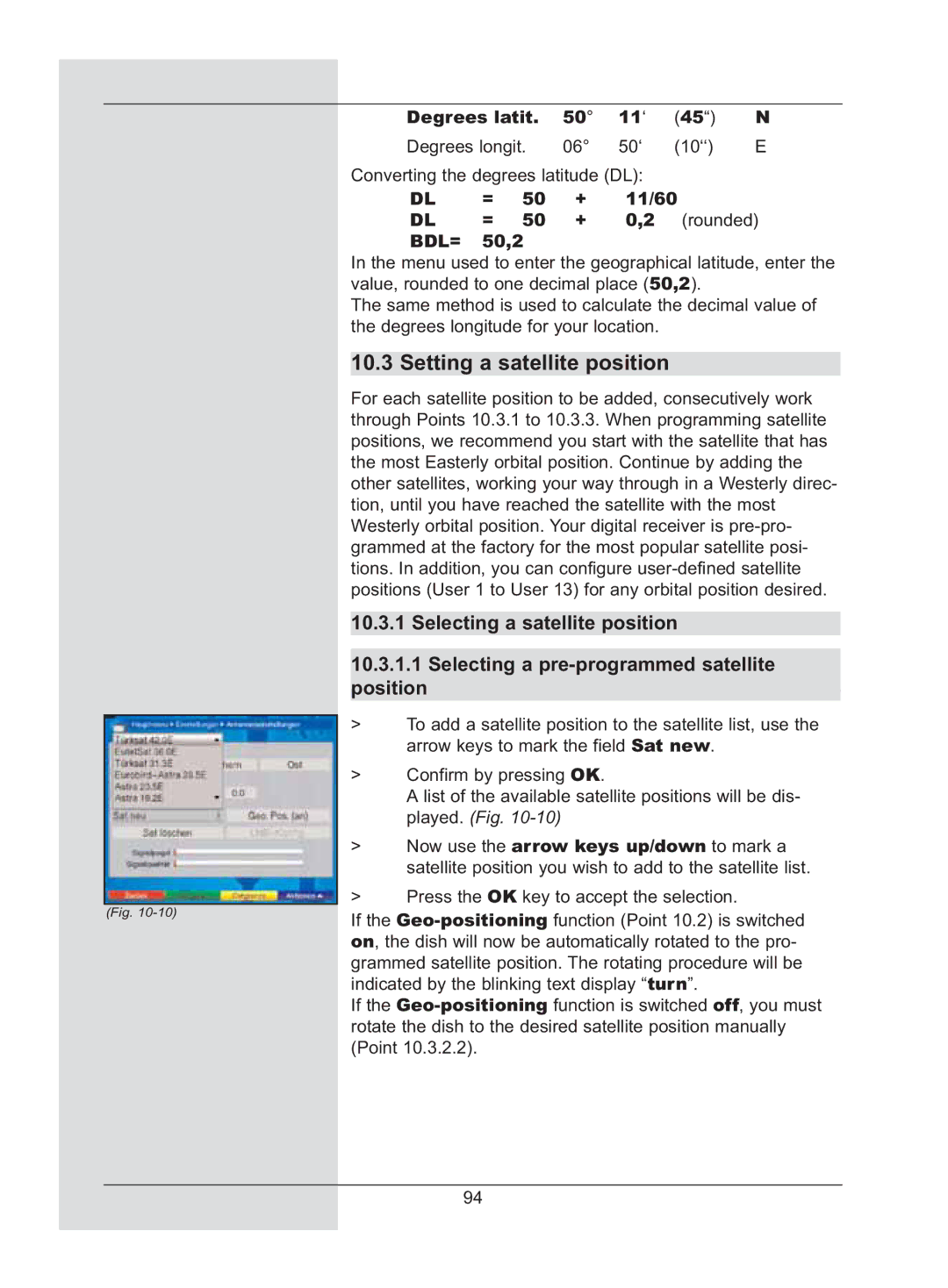
Degrees latit. | 50° | 11‘ | (45“) | N | ||
Degrees longit. | 06° | 50‘ | (10‘‘) | E | ||
Converting the degrees latitude (DL): |
|
| ||||
DL | = | 50 | + | 11/60 |
| |
DL | = | 50 | + | 0,2 | (rounded) | |
BDL= | 50,2 |
|
|
|
| |
In the menu used to enter the geographical latitude, enter the value, rounded to one decimal place (50,2).
The same method is used to calculate the decimal value of the degrees longitude for your location.
10.3 Setting a satellite position
For each satellite position to be added, consecutively work through Points 10.3.1 to 10.3.3. When programming satellite positions, we recommend you start with the satellite that has the most Easterly orbital position. Continue by adding the other satellites, working your way through in a Westerly direc- tion, until you have reached the satellite with the most Westerly orbital position. Your digital receiver is
10.3.1 Selecting a satellite position
10.3.1.1 Selecting a
> To add a satellite position to the satellite list, use the arrow keys to mark the field Sat new.
> Confirm by pressing OK.
A list of the available satellite positions will be dis- played. (Fig.
> Now use the arrow keys up/down to mark a satellite position you wish to add to the satellite list.
> Press the OK key to accept the selection.
(Fig. | If the |
| |
| on, the dish will now be automatically rotated to the pro- |
| grammed satellite position. The rotating procedure will be |
| indicated by the blinking text display “turn”. |
| If the |
| rotate the dish to the desired satellite position manually |
| (Point 10.3.2.2). |
94
